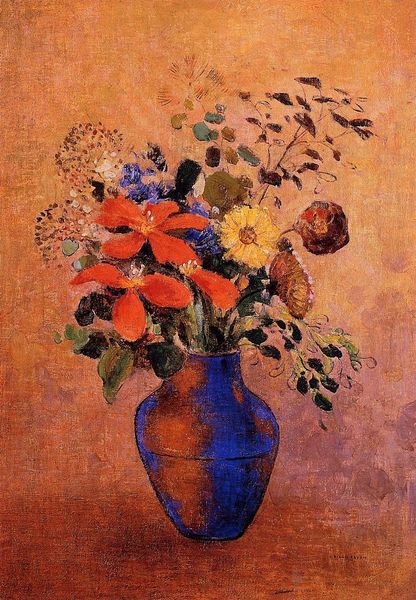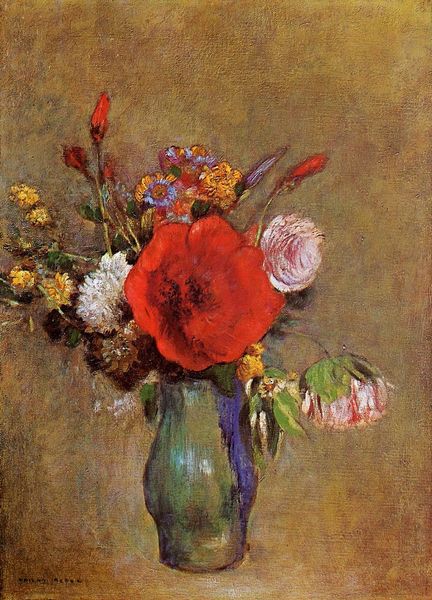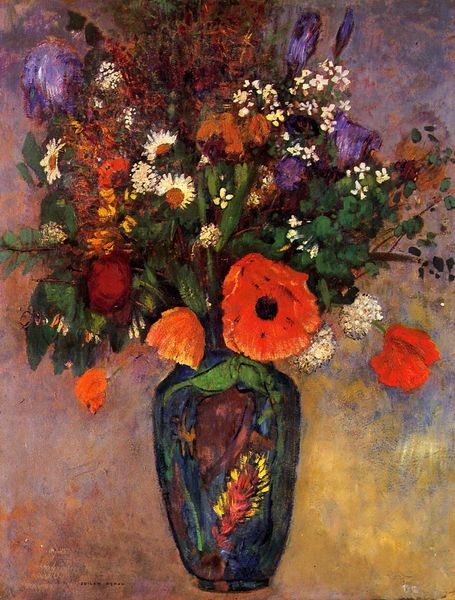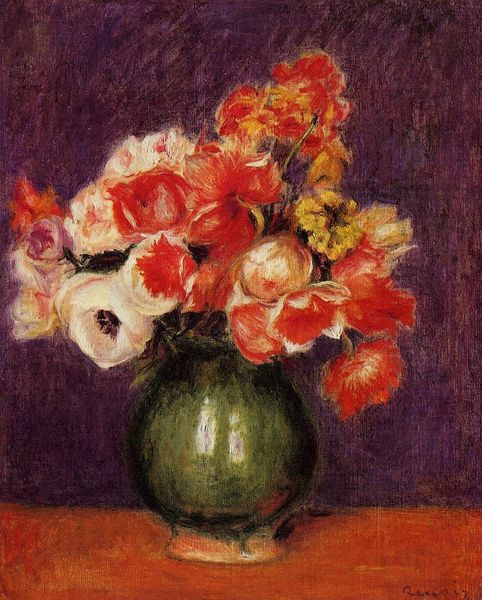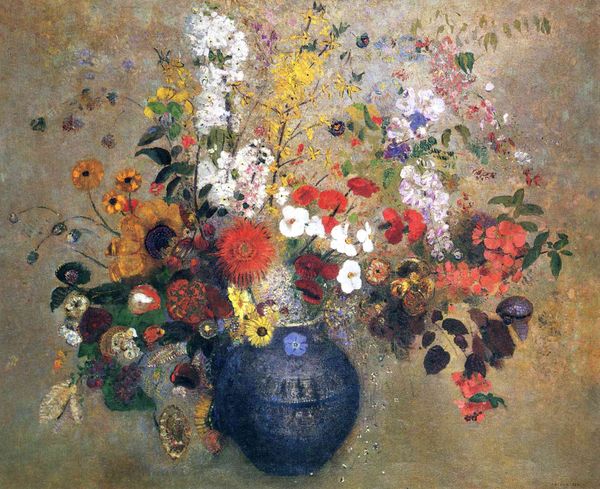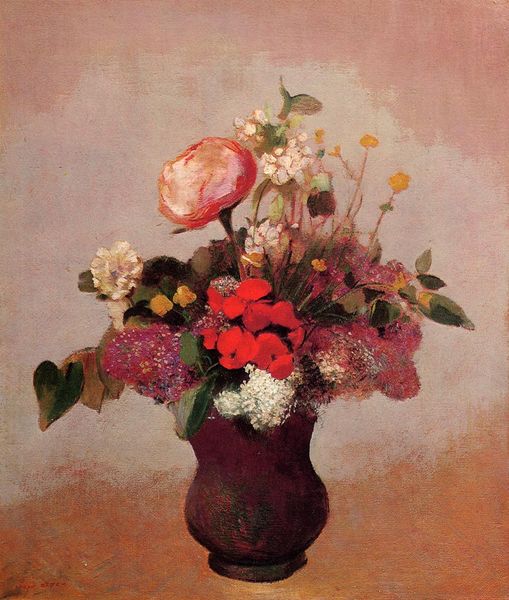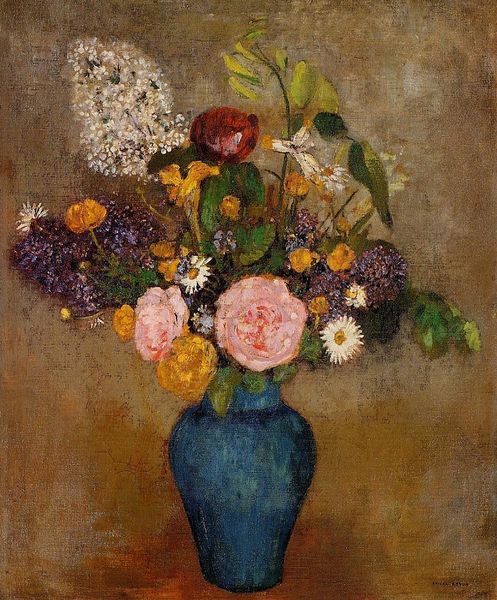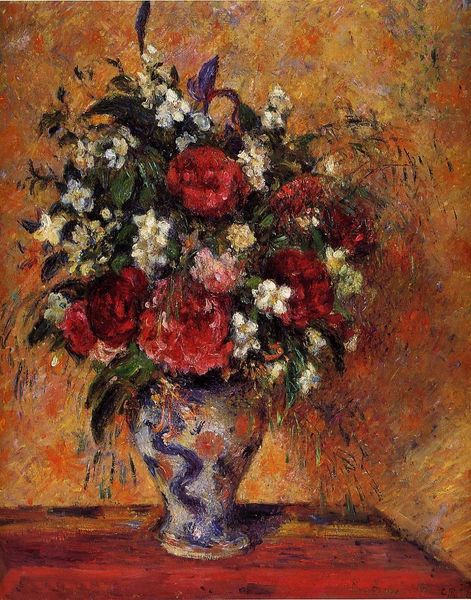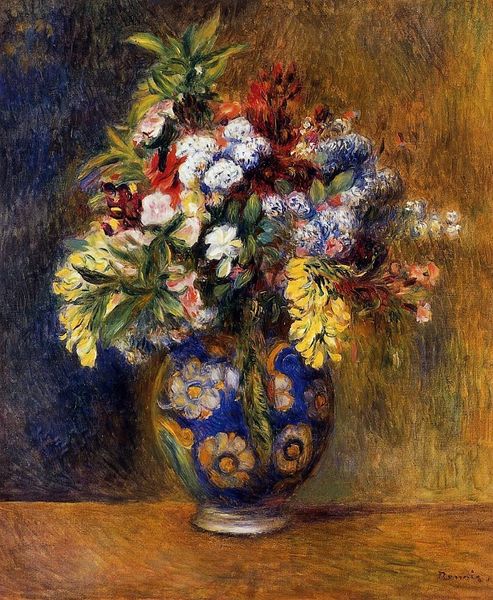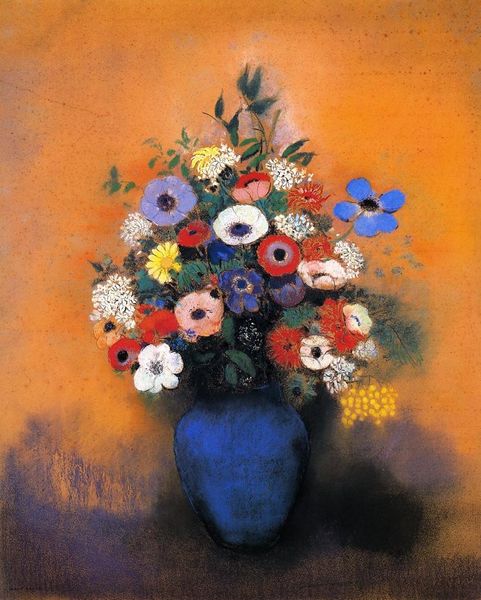
Copyright: Public domain
Curator: So, here we have "Vase of Flowers," an oil painting completed by Odilon Redon in 1909. It currently resides in a private collection. What are your immediate impressions? Editor: There's something very unsettling about this seemingly innocuous bouquet. The colors are vibrant, yet the background feels muddy, almost oppressive. It's not the cheerful still life one might expect. Curator: Redon’s later flower paintings, like this one, mark a shift from the darker, more Symbolist works of his earlier career. It coincides with increased recognition. Perhaps painting such subject matter brought more market stability and broadened access to a collector base looking for exactly that, a "cheerful still life." Editor: Interesting, but does shifting aesthetic preference necessitate such a drastic divergence? This “Vase of Flowers” evokes an emotional intensity through the unconventional color combinations. The juxtaposition of the vivid, almost aggressively red blooms against the muted background disrupts a harmonious reading. Is this a painting of flowers, or a portrait of internal conflict, made palatable to a collector? Curator: You’re drawing out the psychological element. We might consider the historical context. The rise of bourgeois domesticity in the late 19th century increased demand for flower painting as decoration and status symbol, and art dealers could often decide the success or failure of artists on their books. So, what does Redon achieve in the space between meeting a commercial need and preserving artistic integrity? Editor: Perhaps Redon explores the transient nature of beauty and the tension between interiority and social expectations. Looking closer, these aren't conventionally beautiful arrangements. They feel wild, almost on the verge of decay. It reads as a quiet rebellion, an insistence on portraying something beyond simple, domestic charm. The loose brushstrokes convey vulnerability; the petals seem almost to tremble. Curator: It’s a departure from conventional floral paintings for sure. The lack of traditional modeling adds to this sense of ethereal, dreamlike quality so specific to him and Post-Impressionism. I'm seeing this with fresh eyes now. Editor: Ultimately, this piece refuses to be easily categorized. Its charm lies in its complexity, a subtle defiance veiled in a familiar form, wouldn’t you agree?
Comments
No comments
Be the first to comment and join the conversation on the ultimate creative platform.

